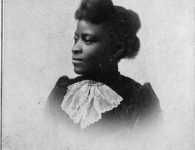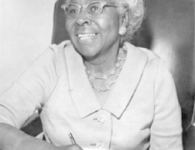Feminism has quite a long history in the United States, coming in and out of the public eye in distinctive waves. Three main waves of feminism have been documented officially throughout history.
First wave: 1840-1920s
Growing out of the abolitionist movement, the first wave of feminism began. One of the largest goals of the first wave was the fight for citizenship, which would give women the right to vote. In 1848, suffragists tried and were unsuccessful, not succeeding until over seventy years later. Many of these Americans were Quaker abolitionists, who opposed slavery on moral grounds. Through this advocation, many women also realized lack of rights for themselves, finding themselves excluded from parts of the movement reserved for men. Though marches, speeches, and writings, first wave feminists spread their message, often to deaf ears. Before achieving the right to vote in 1920, feminists worked to gain access to birth control, property rights, education, being able to keep their own income, and more.
Second wave: 1960s-1988
Coinciding with the Civil Rights Movement, the second wave of feminism reached its peak during the 1960s decade. Many believed in a larger revolution, pushing for the right and acceptance for women to have stable careers, not simply focusing on the family and housework. Reproductive rights of paramount importance during the movement, culminating in the passing of the right to abortion in the Roe v. Wade Supreme Court case. Title IX laws were pushed during this period as well, intended to protect women from rape and sexual harassment. During the 1980s, women of color, women with disabilities, and women in the LGBTQI* spectrum critiqued the myopic scope of mainstream feminism. Women marginalized beyond the aspect of gender were pushing for their voices to be heard in the feminist movement.
Third wave: 1988-present (argued)
Huge shifts in cultural norms progressed the third wave of feminism. By this time, women doing many of the activities and professions reserved exclusively for men in the past became part of the norm. Women raised during the second shift were reaping the benefits of the previous movement, living in its progress. Large numbers of women were being educated, surpassing men. Intersectionality grew in its importance and voice among women of color. Issues such as women taking charge of their own sexuality and sex lives, reclaiming words used to oppress women, and sex positivity became popular. It is argued that a fourth wave, beginning in 2008, has been born, incorporating online media such as twitter, blogs, facebook, etc, replacing older models such as marches and rallies.
The feminist movements have long had a reputation for excluding women of color and issues that affect them, instead only focusing on problems that are main concerns for white women. In 1989, Kimberlé Crenshaw, law scholar and critical race theorist, created the term “intersectionality” in a paper called “Demarginalizing the Intersection of Race and Sex: A Black Feminist Critique of Antidiscrimination Doctrine, Feminist Theory, and Antiracist Politics”. Intersectionality combined the aspects of marginalization that oppress black women in conjunction with their gender- a combination called the triple jeopardy of race, class, and gender.
Crenshaw wrote that the intersectional experience of black women is unique, affected by multiple facets, which is why throughout history, black women have faced “problems of exclusion” from both anti-racist and feminist movements. Black men often trump the problems of black women in conversations about racism, and white women continually sideline WOCs in favor of issues they relate to more acutely. Viewing feminism from an intersectional lens has been quite important for women of color, who can’t divorce their racial identity and oppression from their gender.
Source: http://www.feminist.com/resources/artspeech/genwom/baumgardner2011.html
http://everydayfeminism.com/2015/01/why-our-feminism-must-be-intersectional/





















No comments